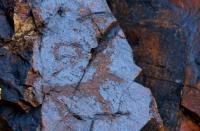You are here
Petroglyphs Eastern Kazakhstan.

Kazakhstan tourism.
«Memory is the treasure house of the mind wherein the monuments thereof are kept and preserved»
Thomas Fuller.
Tours to Petroglyphs Eastern Kazakhstan.
Sites in Eastern Kazakhstan Eastern Kazakhstan occupies the south-western part of the Altai (Rudniy and Southern Altai Ranges), the Zaysan Basin, the Kalbi Plateau, the Saur and Tarbagatay Ranges, the Near Irtysh Plain and the eastern part of the Kazakh Uplands (Chingiztau).
The region is part of the Arctic Ocean and Kara Sea basins and the drainage area of Lake Balkhash. The watershed stretches along the Tarbagatay and Chingiztau Ranges. The main river in Eastern Kazakhstan – the Irtysh – flows for 1,700km within Kazakhstan.
The largest lakes include Zaysan, Markakol, Alakol, and Sassykkol. The Altai and Tarbagatay Mountains are the main places for rock art in Eastern Kazakhstan. The history of rock art research in Kazakhstan began with the discovery of a series of sites in the Near Irtysh Area in the XIXth century.
Different researchers (Spasskiy G.-I., Vlangali A., Adrianov A.- V.) then identified dozens of sites in the Altai and Tarbagatay Mountains (Spasskiy 1818; Adrianov 1916). In the 1930’s, Chernikov S.-S. continued their research; in 1971 - 1983, Eastern Kazakhstan rock art was researched and documented by Samashev Z., who systematized and summarized data accumulated by the end of the XXth century about the localization and chronology of petroglyphs.
In 2008, certain sites in Tarbagatay and the Altai were explored by Rogozhinskiy A.E. The mountainous regions of Eastern Kazakhstan harbor a great many rock art sites, which distinguishes the region from others in Kazakhstan.
Their chronology remains unclear in most cases, but the substrate, repertoire, and iconography reveal similarities with sites in the upper reaches of the Irtysh, in China. Some traditions of Bronze Age, Early Iron Age, and mediaeval rock art, well-represented in the Altai, the Minusinsk Basin and Tuva, in Russia and Western Mongolia, are identifiable among the petroglyphs on the right bank of the Irtysh and Tarbagatay. Bronze Age petroglyphs in the Seymin-Turbin tradition, commonly found from there westwards – in Central and Southern Kazakhstan– are present in many sites of the region.
Late Bronze Age and Early Iron Age petroglyphs in the Near Irtysh Area have few similarities with sites in the Chu-Ili Mountains, but are still found in large groups on Eastern Semirechie sites, in the Dzhungarian Alatau. In general, the geographic location and natural specifics of Eastern Kazakhstan during the Late Holocene turned this region into a nodal place of continental communications and migratory processes that took place across the forest-steppe and arid zones of Central Asia.
Authority:
“Rock Art Sites in Kazakhstan”. Alexey E. Rogozhinskiy.
Photos
Alexander Petrov.







